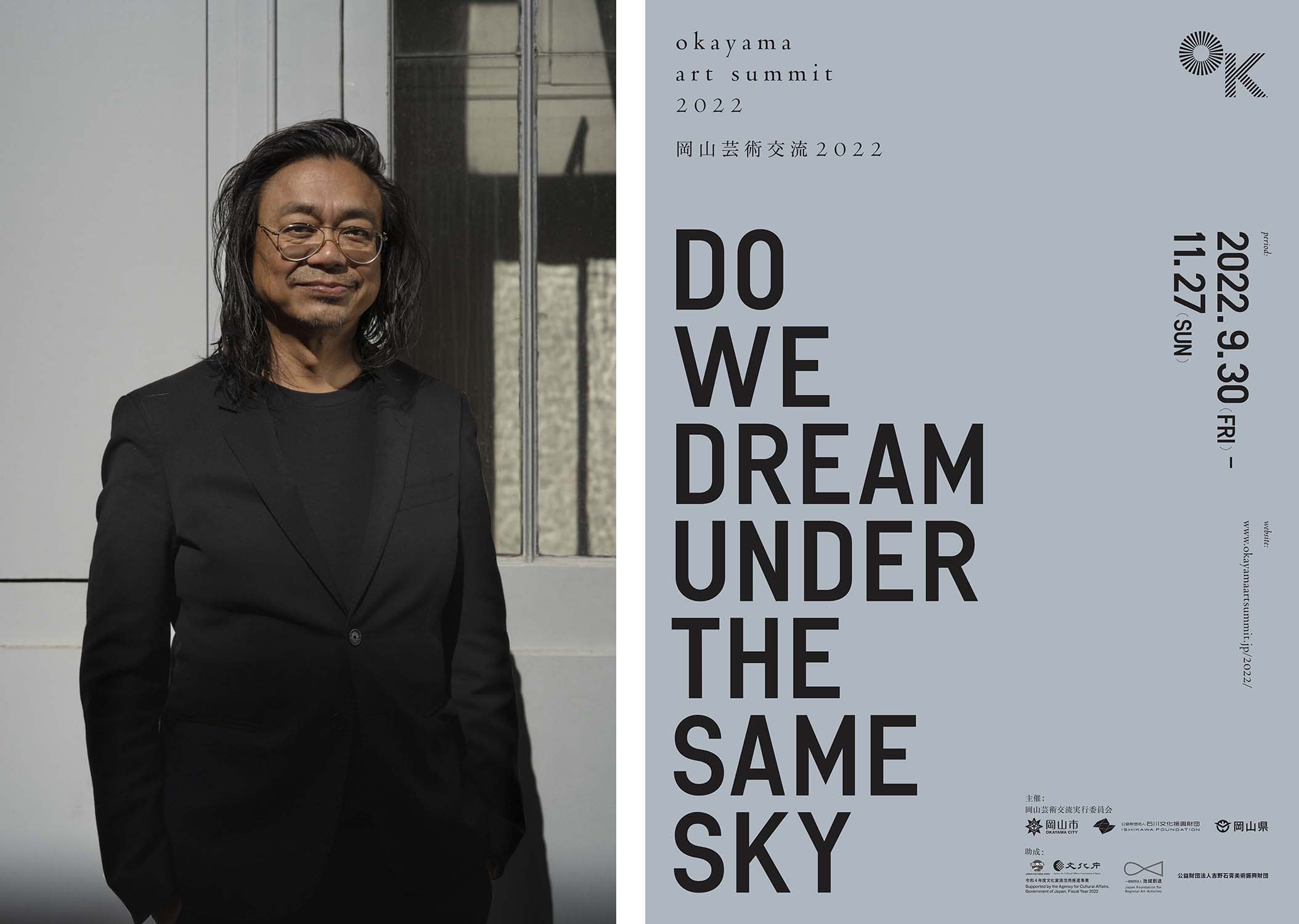In 2019, at the opening of the last Okayama Art Summit in Okayama City, Japan, the then artistic director Pierre Huyghe spoke softly of wanting the experience of the summit to swell and for audiences to feel connected with what they encountered. In some cases, the historic geography of old Okayama was replaced with links to the spaces of fiction and technology, from Mika Tajima’s New Humans (2019), which rendered social media profiles as an undulating pool of black ferrofluid, to Huyghe’s own animated fictional character, Annlee, whose voice drifted through the Hayashibara Museum of Art. ‘I’m haunted by your imagination, and that’s what I want from you,’ she said. ‘See, I’m not here for your amusement. You are here for mine!’
The Huyghe-curated ‘IF THE SNAKE’ described an odd, posthuman future concerned with leaving the known world for a fictional part of Okayama. Now, three years on, ‘Do we dream under the same sky’,curated by Rirkrit Tiravanija, brings the summit back to earth, drawing attention to what has been lost in the interim. ‘I’m hoping we give more real attention to the edges and look more towards Asia,’ he said by email. ‘It seems like an endless loop of discussion, this ideal of refocusing our perspectives towards the world of art outside of the center, outside of objectness, more towards activities.’

But much has changed in the past three years. ‘Do we dream under the same sky’ is deliberately emphasizing the local character of Okayama. This is a clear departure from Huyghe’s edition, steeped as it was in self-generating fictions. It is also a very different stance from ‘Development’, the inaugural Okayama Art Summit curated by Liam Gillick in 2016, which focused on history as a layering of changes. Amid the past two years, Japan has remained one of the few countries responding to the pandemic with a virtually sealed border. As it slowly opens up, the summit’s Executive Director Taro Nasu says the project will draw upon the intrinsic nature of the city, ‘working with local residents and the unique local culture.’
The 2022 edition is spread far and wide, taking place at the Former Uchisange Elementary School, Tenjinyama Cultural Plaza of Okayama Prefecture, and Okayama Orient Museum as well as venues including the Okayama Korakuen Garden, Okayama Shrine, and Okayama Castle. These sites host a variety of different practices, from Ryoji Ikeda’s meticulously planned video works to choreographed pieces by Vietnamese-American dancer My-Linh Le. A version of Tiravanija’s Untitled 2017 (Oil Drum Stage) will be repurposed to feature over 140 local performers and musicians, among them sound artist Shun Owada and Untitled, a band formed by artist Yutaka Sone. Elsewhere, communities that might otherwise remain out of sight will also be given a platform. For one such project, the Vietnamese group Art Labor is collaborating with Jrai artists, an indigenous group hailing from the Central Highlands of Vietnam and Cambodia, who were forced through colonialism, the Vietnam war, and religious persecution to resettle in alien places as far away as America.
The audience is also invited to take part in the proceedings. Many of Tiravanija’s past projects – from his sake bar at the Institute of Contemporary Arts in London to his tearoom at the National Gallery Singapore – have had a strong participatory element. The summit is no different. Tiravanija has teamed up with local restaurants throughout the city to offer new recipes, inviting visitors to engage with the summit in unconventional ways and instill a momentary pause within the program – at a time when most of the world has been forced to rethink what respite stands for.
Films by artists like Apichatpong Weerasethakul, Wang Bing, Asif Mian, and Shimabuku are to be presented in spaces Tiravanija refers to as ‘non- sites’— what he describes as ‘more public, more local [locations], like shopping arcades, coffee shops and temples, radio stations and cinemas.’ In this sense, the 2022 edition continues the tradition of treating Okayama as a laboratory for the unexpected. Indeed, Gillick previously claimed one success of the summit was that everyone who visits leaves as a different person. Nasu sees the experience as something long term. ‘Even if you don't understand an exhibit when you see it,’ he says, ‘you may suddenly understand it years later.’
What connects previous editions of the Okayama Art Summit with this one is that cognitive gap. The dream of Tiravanija’s title is something suggesting potential while lamenting loss. While Gillick’s ‘Development’ looked back and Huyghe’s ‘IF THE SNAKE’ looked forward, ‘Do we dream under the same sky’ stands in between. The title of this edition, which aims to resist time altogether, not to mention the amnesia of modern technology, which is laying waste to attention spans everywhere, prompts the question: Do we share the same nightmares? There’s real purpose to be explored in the fever dream of recent years, with ‘Do we dream under the same sky’ approaching an awkward and less assessable world by slowing things down and reconsidering ideas of inclusion, participation, and storytelling in the process.
Stuart Munro is a writer based in Tokyo.
Captions for full-bleed images: 1. Shimabuku, Swan goes to the Sea, 2014. Performance view, 'Imagineering', Okayama Art Project. © Shimabuku. Collection of Ishikawa Foundation. Courtesy of the artist. 2. My-Linh Le, Mẹ Love You Long Time, 2020. Dance film, 2 min. 39 sec. Courtesy of the artist. Videography by Jardy Santiago.